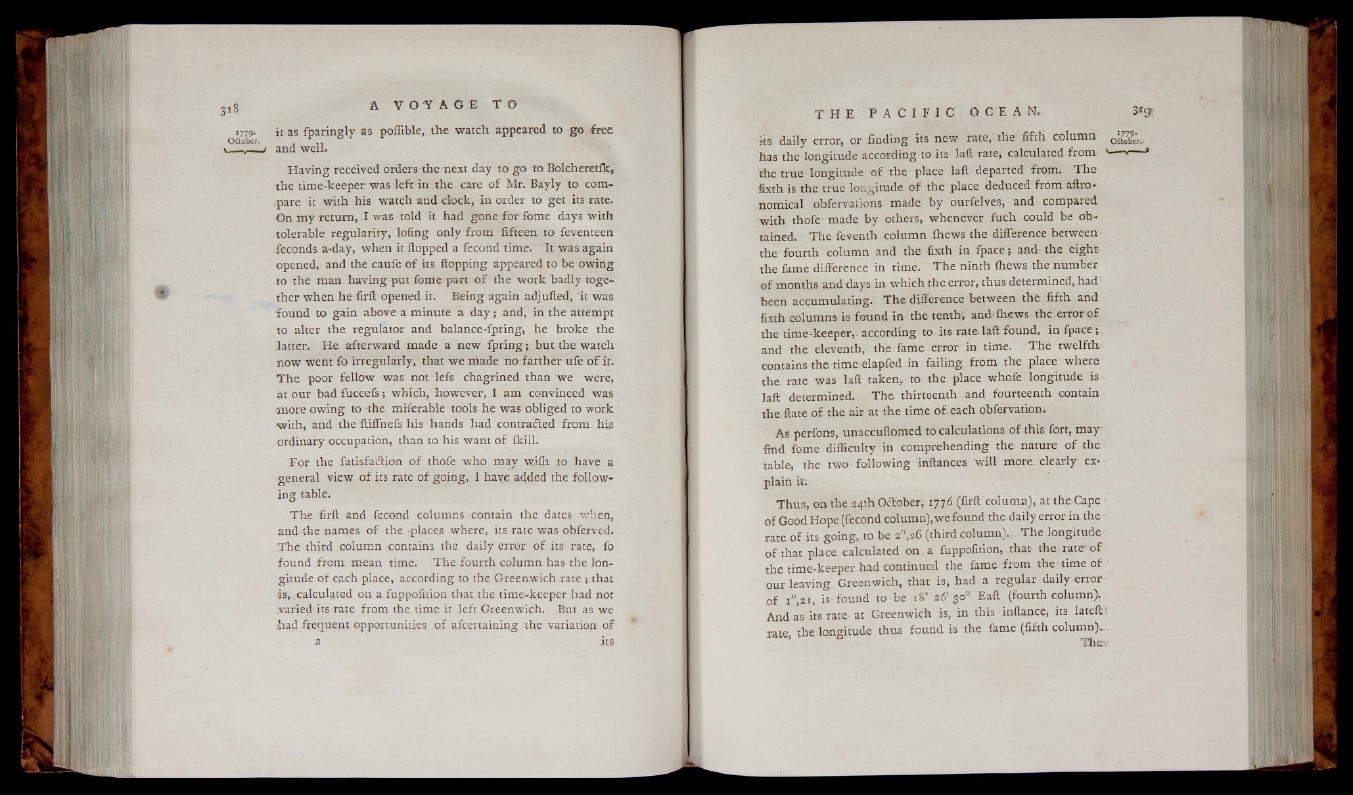
it as fparingly as poffible, the watch appeared to go fre e
and w ell.
H a vin g received orders the next day to g o -to Bolcheretfkj
the time-keeper was left in the care o f Mr. Bayly to compare
it with his watch and clock, in order to g e t its rate.
On my return, I was told it had gone for fome days with
tolerable regu larity, loling only from fifteen to feventeen
feconds a-day, when it flopped a fecond time. It was again
opened, and the caufe o f its flopping appeared to be ow in g
to the man having put fome part o f the w ork badly together
when he firft opened it. Being again adjufted, it was
found to ga in above a minute a d a y ; and, in the attempt
to alter the regulator and balance-fpring, he broke the
latter. He afterward made a n ew fp r in g ; but the watch
n ow went fo irregularly, that w e made no farther ufe o f it.
T h e poor fellow was not lefs chagrined than we were,
at our bad fu c e e fs ; which, however, I am convinced was
•more owin g to the miferable tools he was obliged to work
■with, and the ftiffnefs his hands had contracted from his
ordinary occupation, than to his want o f ikill.
;For the fatisfaction o f thofe who may wifh to have a
general view o f its rate o f go ing, I have, added the follow in
g table.
T h e firft and fecond columns contain the dates when,
and the names o f the -places where, its rate was obferved.
T h e third column contains the daily error o f its rate, fo
found from mean time. The fourth column has the longitude
o f e a ch place, according to the Greenwich rate ; that
-is, calculated on a fuppofition that the time-keeper had not
varied its rate from the time it left Greenwich. But as we
¡had frequent opportunities o f afcertaining the variation o f
its daily error, or finding its new- rate, the fifth column odotieiv
has the longitude according to its- laft rate, calculated from '*
the true longitude o f the place laft departed from. T h e
fixth is the true longitude o f the place deduced from aftro-
nomical obfervations made by ourfelves, and compared
w ith thofe made by others, whenever fuch could be obtained.
The feventh column ihews the difference between
the fourth column and the fixth in fpace-; and the eight
the fame difference in time. T h e ninth ihews the number
o f months and days in which the error, thus determined, had
been accumulating. T h e difference between the fifth and
fixth columns is found in the tenth, and-ihews the .error o f
the time-keeper, according to its rate laft found, in fp a c e ;.
and the eleventh, the fame error in time. The twelfth
contains the time: elapfed in failing, from the place where
the rate was laft taken, to the place whofe longitude is-
laft determined.. T h e thirteenth and -fourteenth contain
tllc ftate o f the air at the time of-each obfervation.
As perfons, unaccuftomed to calculations o f this fort, may
find fome difficulty in comprehending the nature o f the ■
table, the two fo llow in g inftances w ill m o re clearly explain
it;
T hu s, on the 24th October, 1776 (firft column), at the Cape ■
o f Good Hope (fecond column), w efoun d th ed a ily error in the ■
rate o f its going,, to be 2 .26 (third column).; T he longitude
o f that place calculated on a fuppofition, that- the. rate* o f
the time-keeper had continued the fame from the time o f
our leaving. Greenwich, that is, had a regular daily error
o f i" ,2 i, is found to be 180 26'30" Eaft (fourth column).
And as its rate at Greenwich is, in this inftancej its lateftt
rate the longitude thus found is the fame (fifth column)—
T iie ..-